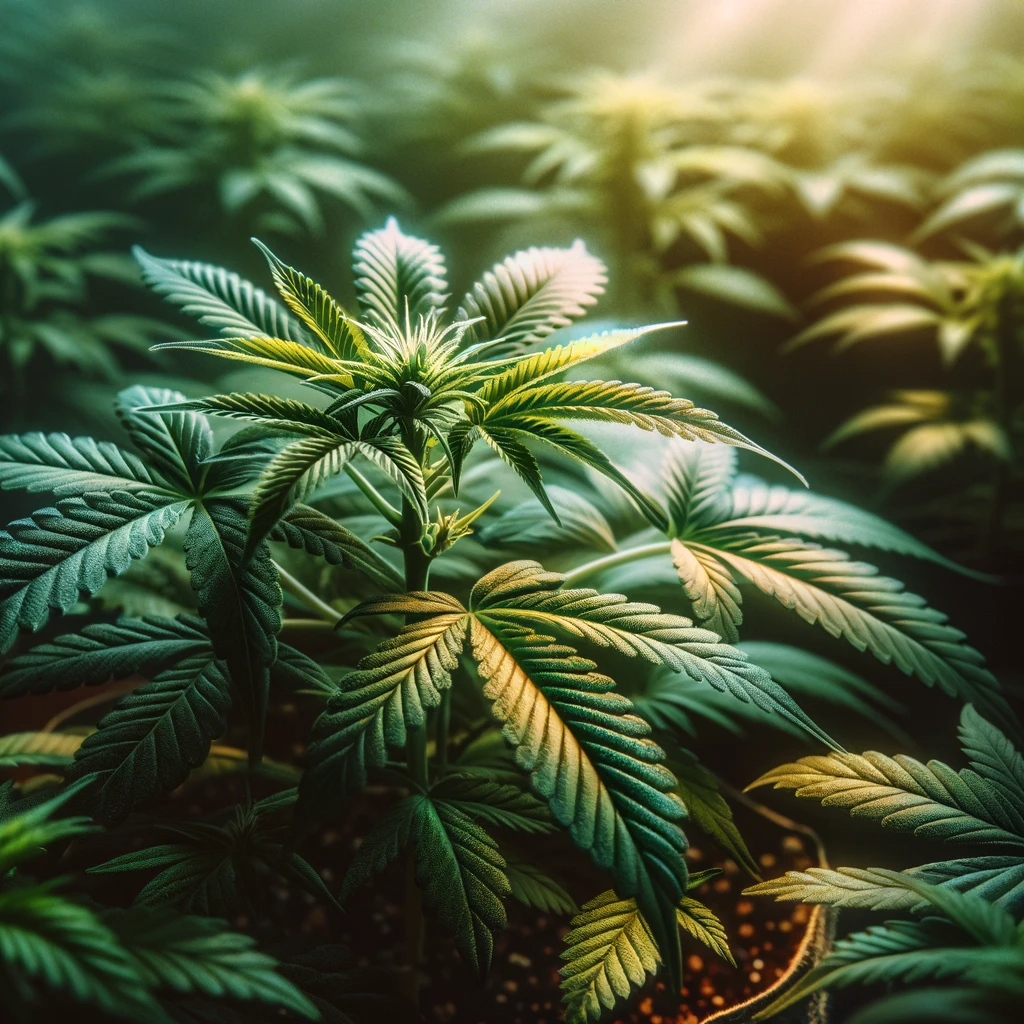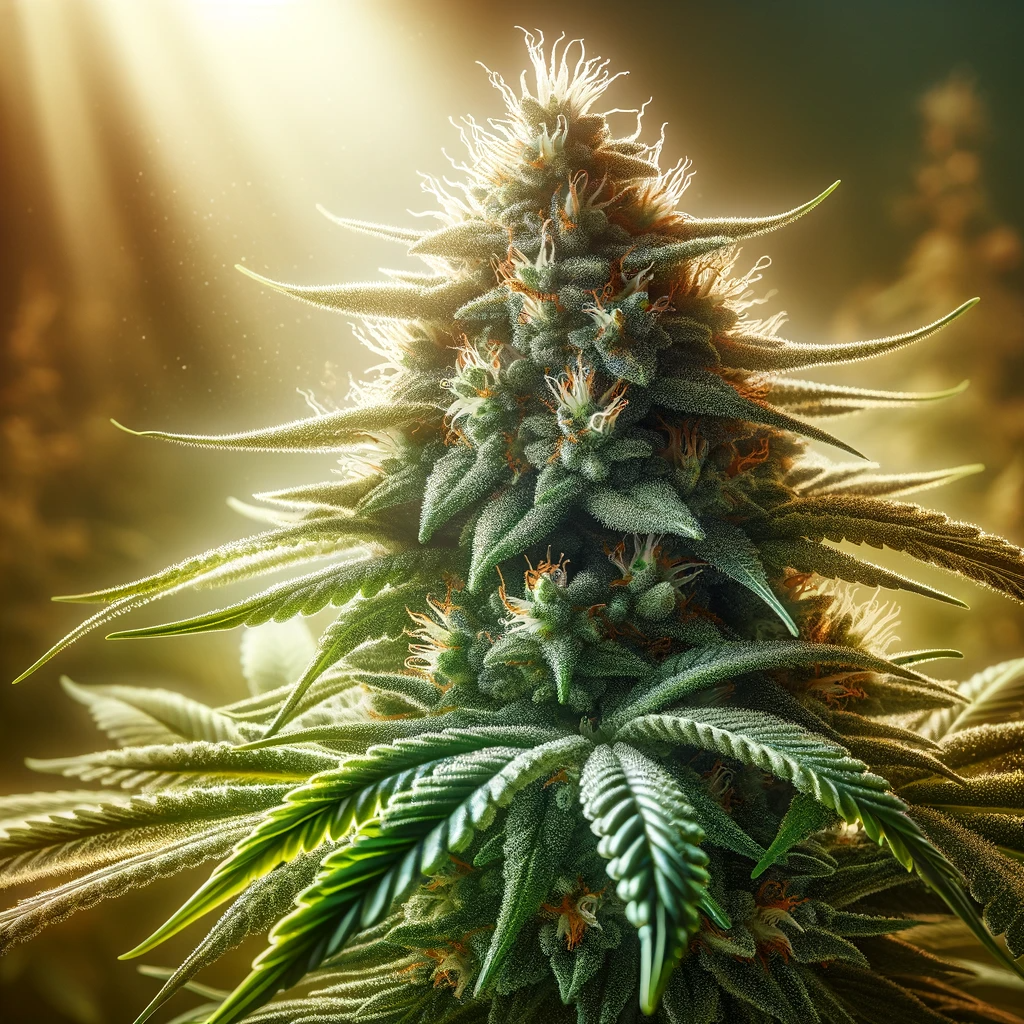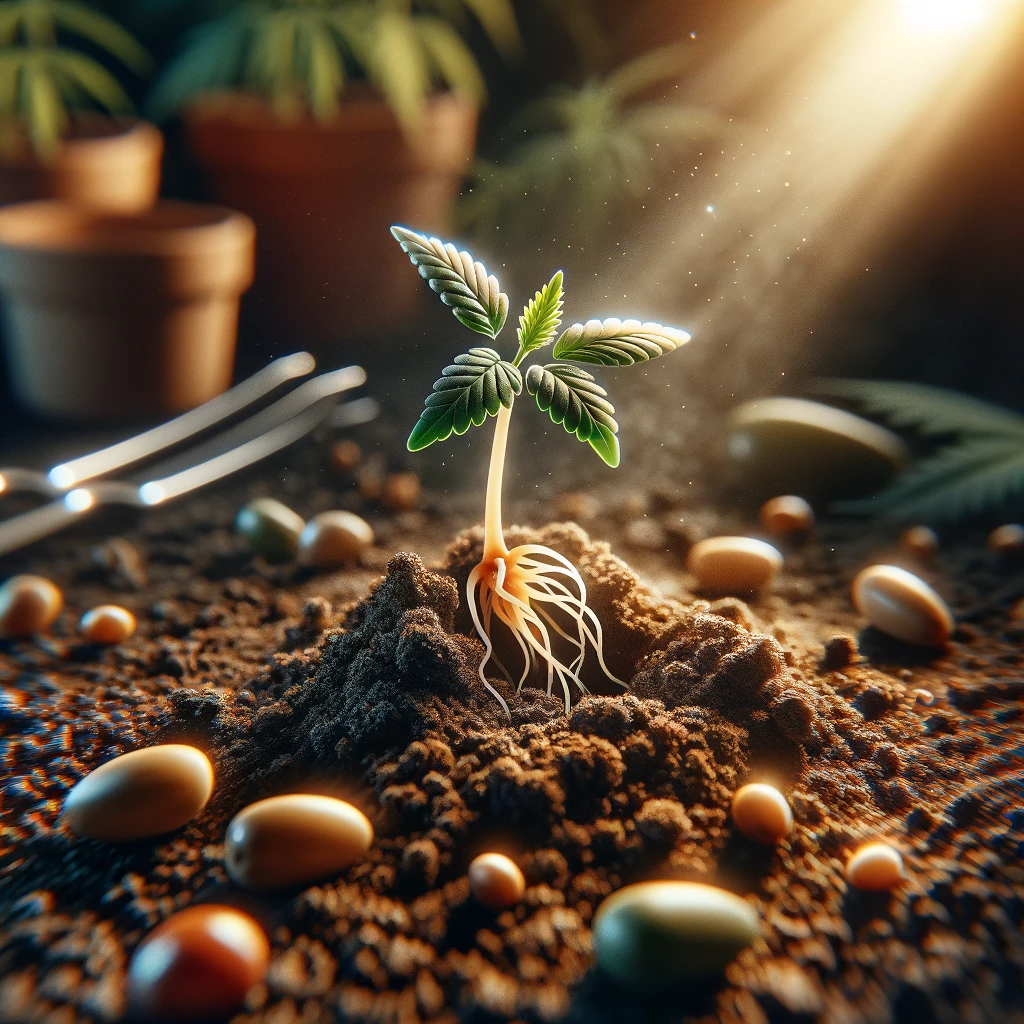Step-by-Step for Beginners Germinate Cannabis Seeds
Cultivating cannabis starts with a single, crucial step: germination. This foundational process awakens the life within the seeds, setting the stage for healthy plant growth. This guide is designed to offer beginners a comprehensive overview of how to germinate cannabis seeds effectively, ensuring a successful start to their cultivation journey.
Understanding Cannabis Seed Germination
Germination is the process through which a cannabis seed sprouts and begins to grow. It’s the first step in starting your cannabis garden, and understanding it is key to ensuring healthy development. Germination is triggered by moisture, warmth, and sometimes light, leading to the emergence of a seedling from the seed.
Factors Affecting Germination
- Moisture: Seeds need to be kept moist to germinate.
- Warmth: A warm environment stimulates growth.
- Air: Seeds require oxygen to germinate.
Preparing for Germination
Before starting, it’s essential to gather all necessary supplies and create an optimal environment for your seeds.
Supplies Needed
- Cannabis seeds
- Paper towels
- Distilled water
- Tweezers
- Plates
- A warm, dark space
Choosing the Right Seeds
Select high-quality seeds for a better germination rate. Look for seeds that are:
- Dark in color
- Hard and durable
- Without cracks
Avoid pale, soft, or damaged seeds, as they have a lower chance of germinating.

Step-by-Step Germination Process
1. Soaking the Seeds
- Objective: To soften the seeds’ shell.
- Method: Place the seeds in a glass of distilled water for 12-24 hours.
- Significance: Soaking speeds up germination by hydrating the seeds.
2. Paper Towel Method
- Preparation: Fold a paper towel in half and moisten it with distilled water.
- Placement: Place the seeds between two paper towels and then between two plates to create a dark, moist environment.
- Monitoring: Ensure the paper towels remain moist but not waterlogged.
- Germination Time: Seeds typically sprout in 2-7 days.
3. Transferring Sprouted Seeds
- Handling: Use tweezers to gently handle the sprouted seeds.
- Planting: Carefully transfer the seedlings to their growing medium, root down.
- Depth: Plant seeds about a quarter-inch deep in the soil.
Tips for Successful Germination
- Consistent Temperature: Maintain a consistent temperature of 70-90°F (20-32°C).
- Avoid Overwatering: Keep the medium moist but not soaked.
- Patience: Some seeds take longer to germinate. Do not rush the process.
Troubleshooting Common Germination Issues
- No Sprouts: Check if the environment is too cold or the medium too wet.
- Mold Growth: This indicates too much moisture. Ensure proper air circulation and reduce watering.
- Weak Seedlings: Often a result of insufficient light or nutrients. Make sure seedlings have adequate light and are in a nutrient-rich medium.
Germinating cannabis seeds is a delicate process that sets the tone for your entire cultivation experience. By following these detailed steps and maintaining patience, you’ll be on your way to growing healthy and vibrant cannabis plants. Remember, the key to successful germination lies in the balance of moisture, warmth, and air. With the right care and attention, your seeds will embark on a journey of growth, leading to rewarding results for both novice and experienced growers alike.
Continuing from the crucial step of germination, the journey of cultivating a healthy cannabis plant progresses into the phases of seedling care and vegetative growth. Mastering these stages is essential for ensuring your plant reaches its full potential, producing robust yields and high-quality cannabis.
Nurturing Seedlings: The Foundation of Growth
After the seeds have sprouted, the young seedlings require delicate care to thrive. This stage is pivotal as the seedlings are vulnerable and can benefit greatly from a controlled environment.
Optimal Conditions for Seedlings
- Light: Seedlings need plenty of light to grow strong. Use a fluorescent or LED grow light to provide 14-18 hours of light a day.
- Temperature: Keep the environment at 68-77°F (20-25°C) to promote healthy growth.
- Humidity: A humidity level of 60-70% is ideal for seedlings.
Watering and Feeding
- Watering: Keep the soil moist but not waterlogged. Overwatering is a common mistake that can lead to root rot.
- Nutrients: Start with a diluted nutrient solution after the first two weeks, as the soil’s initial nutrients begin to deplete.

Transitioning to the Vegetative Stage
As your plants grow, they will enter the vegetative stage, where the focus shifts to developing strong roots and foliage. This stage is crucial for building the plant’s structure that will support flowering and bud production later on.
Key Factors for Vegetative Growth
- Increased Light: Cannabis plants in the vegetative phase benefit from more light, up to 18 hours a day.
- Nutrient Requirements: Increase the concentration of nutrients, focusing on nitrogen-rich fertilizers to promote foliage growth.
- Pruning: Regular pruning helps to encourage a bushier plant with more buds. Remove the lower branches that receive less light to direct the plant’s energy to the top growth.
Training Techniques
To maximize yield and manage plant size, consider employing training techniques such as:
- Low Stress Training (LST): Gently bending and tying the plant’s branches to encourage horizontal growth, increasing light exposure to all parts of the plant.
- Topping: Cutting off the top of the main stem to encourage the growth of two main stems, resulting in a fuller plant.
Las Vegas Cannabis Tourism in 2024: Best Spots and Experiences
Cannabis Cultivation 101: Tips for Growing Your Own Plants
Emerging Trends in Cannabis Products: What’s Coming in 2024
Monitoring and Adjusting Environmental Conditions
As your plants grow, it’s essential to continuously monitor and adjust the environmental conditions to maintain optimal growth. This includes:
- Temperature Control: Ensure that daytime temperatures are between 70-85°F (21-29°C) and nighttime temperatures do not drop below 64°F (18°C).
- Humidity Management: Gradually reduce humidity to 40-50% to prepare plants for the flowering stage.
- Adequate Ventilation: Good airflow is crucial for preventing mold and pests. Use fans to circulate air and an exhaust system to maintain fresh air.
Caring for cannabis during the seedling and vegetative stages sets the foundation for a successful harvest. By providing the right conditions and employing effective training techniques, growers can influence the plant’s growth patterns and optimize their garden’s yield potential. The effort put into these stages will be evident in the quality and quantity of the final product, making it a rewarding part of the cultivation process.
As the cannabis plants transition from the vegetative to the flowering stage, the focus of cultivation shifts towards optimizing conditions for bud development and potency. The flowering stage is when cannabis plants produce buds and is critical for yield and quality. Understanding and managing this phase is essential for achieving the best results from your grow.
Initiating the Flowering Stage
To initiate flowering in photoperiod cannabis strains, you’ll need to adjust the light schedule to 12 hours of light and 12 hours of darkness. This mimics the natural transition to autumn and triggers the plants to start flowering. It’s crucial to maintain this light schedule without interruption to avoid stressing the plants, which can lead to hermaphroditism or reduced yields.

Environmental Adjustments for Flowering
- Temperature and Humidity: Lower the temperature slightly during the flowering stage, aiming for 65-80°F (18-26°C) during the day and not allowing it to fall below 60°F (15°C) at night. Humidity should be reduced further to 40-50% to prevent mold and bud rot.
- Nutrient Shift: As plants enter the flowering stage, their nutrient needs shift. Reduce nitrogen intake and increase phosphorus and potassium to support bud formation and development. Using bloom-specific nutrients can provide the optimal balance for flowering.
Monitoring Plant Development
During the flowering stage, regular monitoring is key to identifying and addressing any issues promptly. Pay attention to:
- Pest and Disease Management: Keep a vigilant eye out for signs of pests and diseases. The flowering stage is crucial, and any stress on the plants can significantly impact the quality and quantity of the yield.
- Trichome Development: The trichomes on the cannabis plant are tiny, crystal-like structures on the surface of the leaves, stems, and buds. They contain cannabinoids like THC and CBD. Observing the trichomes with a magnifying glass can help determine the optimal harvest time. When most trichomes shift from clear to milky white, it’s nearing the peak time for harvest.
Preparing for Harvest
Determining the right time to harvest is crucial for maximizing the potency and flavor of your cannabis. Besides trichome opacity, pay attention to the pistils (the hair-like structures on the buds). When about 70-90% of the pistils have darkened and curled in, it’s a sign that the plant is ready for harvest.
Final Flush
Before harvesting, it’s recommended to flush the plants by watering with plain water for one to two weeks. This process removes excess nutrients from the soil and the plant, improving the smoothness and flavor of the final product.
Harvesting, Drying, and Curing
Harvesting involves cutting down the plants, trimming away the large leaves, and then drying and curing the buds.
- Drying: Hang the trimmed buds upside down in a controlled environment (60-70°F or 15-21°C and 45-55% humidity) for about 7-14 days until the stems snap rather than bend.
- Curing: Once dry, place the buds in airtight containers, opening them daily for the first week to allow moisture to escape and to ensure even curing. This process improves the taste and overall quality of the cannabis.
The flowering stage is a rewarding phase of cannabis cultivation, where careful attention to environmental conditions, nutrient needs, and timing can greatly influence the final yield and quality of your cannabis. Through diligent care, monitoring, and adjusting, growers can ensure their plants are healthy and productive, leading to a successful and satisfying harvest.






